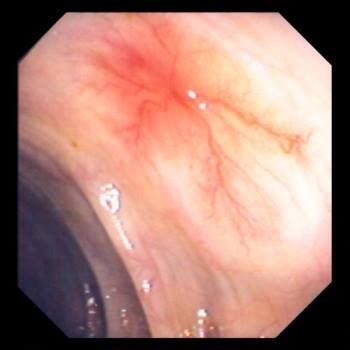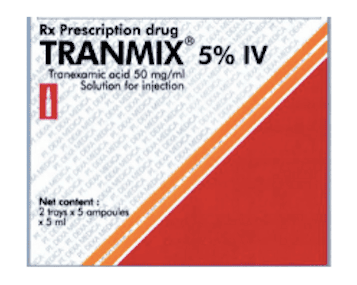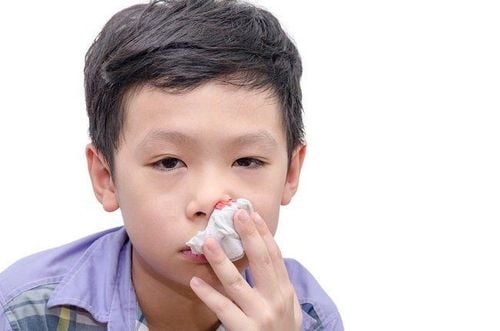This is an automatically translated article.
The article is professionally consulted by Master, Doctor Vu Huu Thang - Emergency Resuscitation Doctor - Emergency Resuscitation Department - Vinmec Ha Long International HospitalNosebleeds, also known as nosebleeds. This is a bleeding condition in the nasal passages due to damage to the lining of the nose.
1. Classification of nosebleeds
Nosebleeds (nosebleeds) are classified into 2 types: anterior nosebleeds and posterior nosebleeds.
Anterior nosebleeds: Anterior nosebleeds account for nearly 90% of nosebleed cases. The bleeding site is the nasal septum, this area contains many small vessels that are easy to break when blowing your nose or having local trauma such as picking your nose, pinching your nose or accidentally scratching your hand. Bleeding coming from the front of the nose.
Anterior nosebleeds are common in hot climates or in dry environments such as long-term use of heaters or air conditioners. Dry mucous membranes cause the nasal septum to scab, crack, and bleed.
Anterior nosebleeds usually occur on one side of the nose and mainly flow to the front. This condition lasts for a long time and the volume of bleeding is not much. After applying first aid measures, the bleeding stopped.
Posterior nosebleeds: About 10% have posterior nosebleeds, often involving blood vessels higher and deeper in the nose. Posterior nosebleeds are more dangerous and difficult to control than anterior nosebleeds. Common in the elderly, people with high blood pressure or trauma to the nose and face.
Bleeding behind the nose usually occurs on both sides of the nose, the blood flows out the back and down the throat. Bleeding profusely and can put the patient in a critical state. The condition can be controlled with nasal wicks or vascular ligation.
In some cases, it is difficult to tell whether a nosebleed is before or after. Both can cause blood to flow to the back of your throat if you're lying on your back, but a posterior nosebleed is much more serious. You need to go to a medical facility for timely help.
Trắc nghiệm: Bạn có phân biệt được chính xác cảm lạnh và cúm mùa?
Cảm cúm và cảm lạnh là hai khái niệm mà chúng ta thường đánh đồng nó giống nhau, không phân biệt rõ ràng. Dưới đây là một số câu hỏi trắc nghiệm, giúp bạn có thêm những kiến thức phân biệt cảm lạnh và cảm cúm. Từ đó, có những biện pháp điều trị bệnh phù hợp.2. Causes of nosebleeds
Nosebleeds occur when small blood vessels in the nose burst and bleed. This phenomenon occurs most often in children aged 2-10 years. In most cases of nosebleeds, there is no obvious cause.
Causes of nosebleeds are mostly spontaneous and occur unexpectedly. If you have a lot of nosebleeds it could be due to some of the following reasons:
Dry climates or hot, dry air make your nose dry which makes blood vessels sensitive and can burst Nose Picking Day Nose or Scrub rubbing too hard Chemical irritants such as ammonia Use of cocaine Use of aspirin Colds Blow your nose repeatedly and too forcefully Allergies, infections of the nose, throat and sinuses Child has had a foreign object inserted in the nose, such as a bead , marbles... Due to trauma to the nose Due to allergies or allergy medications can dry out the nose Straining to have a bowel movement, having constipation Having a deviated septum in the nose Having to breathe oxygen through a nasal tube Use some medicines such as anti-inflammatory drugs, sprays Having a head injury, broken nose, broken skull base Some blood thinners Bleeding or clotting disorders Tumors can also cause nosebleeds.

Some other less common causes of nosebleeds such as: Alcohol use; Immune thrombocytopenia (ITP); Hereditary hemorrhagic telangiectasia; Leukemia ; Nasal tumor; Nasal polyps ; Nose surgery; Pregnancy...
Nosebleeds are not a symptom or result of high blood pressure. However, severe high blood pressure can make your nosebleeds worse or last longer.
You can get a nosebleed from a bleeding disorder, but it's rare. If your nosebleeds don't stop or you're bleeding heavily from your gums, you should see your doctor to get checked. Bleeding disorders can put you at risk because your blood platelets are missing or don't work.
Another rare cause of nosebleeds is a tumor in the nose or sinuses. These tumors may not be malignant, they are just benign. Only about 2,000 cases of cancerous tumors in the nose or sinuses are diagnosed each year.
In some cases, nosebleeds can run in families. A rare condition called hereditary hemorrhagic telangiectasia (HHT) affects the blood vessels. The main symptom is nosebleeds that repeat and get worse over time. If you have HHT, you may wake up at night and realize that your pillow is drenched in blood, you may develop red spots on your face or on your hands. If your father or mother or both of your parents have this condition and you are also having nosebleeds, you should go to the medical facility as soon as possible to be checked and improve this condition.
Please dial HOTLINE for more information or register for an appointment HERE. Download MyVinmec app to make appointments faster and to manage your bookings easily.
References: Webmd.com and Mayoclinic.org













